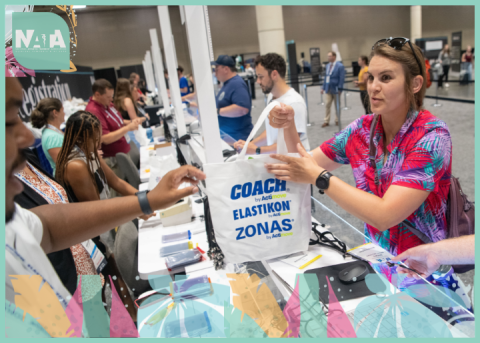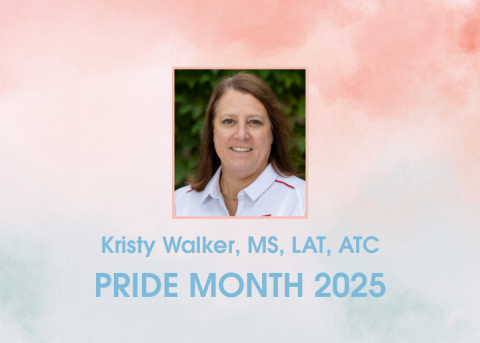
In continuation of the NATA’s Student Leadership Committee’s blog series, we start the year off looking at the performing arts setting. Of the many settings athletic trainers are found in, performing arts may be one of the most unique. With various modifications, considerations and groups of patients, this setting allows clinicians to be as creative as their patients and provide excellent health care in an exciting setting.
We interviewed two athletic trainers who work through the Ohio State University Wexner Medical Center Sports Medicine to learn more. Matt Brancaleone, DPT, ATC, PT is a staff physical therapist who additionally provides outreach services to the Ohio State University Marching Band, also known as The Best Damn Band in the Land. Megan Bane, MS, ATC, is an outreach athletic trainer who work with Ohio State’s Reserve Officer Training Corps and BalletMet Columbus, a professional ballet company and academy. While taking different pathways, both have found ways to grow and flourish in their positions.
Bane found her love of working with dance performing artists from the beginning of her athletic training journey. Throughout high school and college, she was a dancer and found she loved being able to combine dance with her passion of athletic training. She found that she has a special connection with this population and is able to easily relate to them and speak their language. Brancaleone had a less straight forward path to the Ohio State University Marching Band. As part of his post-doctoral physical therapy sports residency program, he had a rotation with the Ohio State University Marching Band, providing coverage field rehearsals and game day performances that he very much enjoyed. After completing his residency, the opportunity presented itself to step into the medical coordinator role and he accepted this position with the hope to grow and improve the services able to be provided to the band.
Both professionals operate similarly to what many of us would think of traditional athletic trainers during game days. When at BalletMet, Bane operates in a small, but busy, athletic training facility. Many of her treatments consist of manual therapy work specifically trying to help patients perform with chronic conditions due to the repetitive nature of the ballet profession. During performance weeks, she works out of the theater, rather than the studio therapy space, covering rehearsals and shows from the curtains. Dancers are unique from other patients in the sense that they are extremely hypermobile. Their “normal” range of motion differs from what we might traditionally expect, and this influences how she treats patients. Other considerations include foot ware, which varies show to show, and understanding that taping and bracing must all be cleared by wardrobe and artistic staff before the dancer performs on stage. Similar to the difference of collegiate sports to professional sports, dancing as a part of a company is the dancer’s livelihood that creates additional pressure to continue to perform. Balancing the performance demands with each patient’s best interest is a challenge unique to this setting that Bane must consider each day.
Brancaleone’s role consists of both clinic time and built-in time during the work week for Ohio State club athletes and marching band members for evaluations, rehabilitations and providing activity modifications. The majority of his patient care is education based rather than hands on. He refers to physicians when needed, but rehabilitates, modifies and educates activities based on their needs. Game days start six hours before kickoff and consist of multiple rehearsals, walk through, sound checks and many things similar to any other athletics’ game day. Brancaleone’s biggest concerns during game days are environmental considerations, hydration and general medical concerns. The band is famous for their all wool uniform, and from the band’s military background, some form of hat or beret must always be worn when outside which can make heat concerns a large problem in Columbus summer heat.
Both settings have many factors similar to traditional athletics, but have additional considerations such as uniforms and different clinical focuses and approaches. Long hours, passionate patients and hard work are all the same, however. Performing arts must balance different aspects of care with patient wishes, emotions and long-term goals while putting health care first. Similar to most athletic trainers, however, is the love of seeing their patients perform at their best doing what they enjoy most. Being able to impact and make a difference in the lives of their patients continually supersedes the daily challenges they may face. Through dedication and passion for their newer and unique settings, both Bane and Brancaleone show the value of having a certified athletic trainer apart of performing arts and where growth in this area can go.





